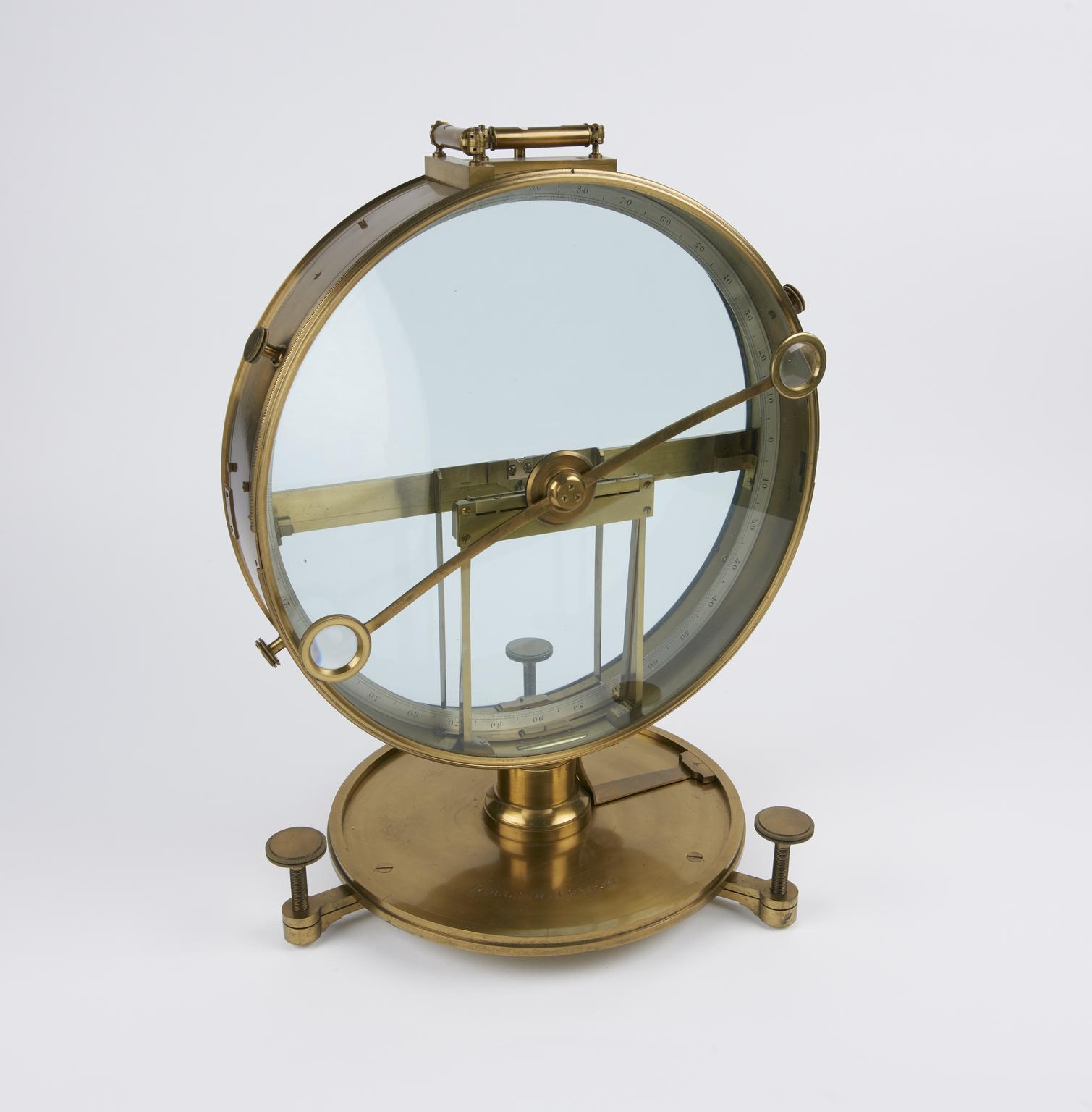
Dip circle with 11 inch needle, c 1820.
Dip circle, 11 inch needle, by Dollond, c.1820
- Object Number:
- 1876-805 Pt1
- type:
- dip circles and dip needles
- Image ©
- The Board of Trustees of the Science Museum
Dip circle, 11 inch needle, by Dollond, c.1820
Dip circles are used to measure the angle between the direction of the earth's magnetic field and the horizontal at any point on the earth's surface. A freely-suspended magnetic needle lies horizontal only at the magnetic equator, where the attraction to the poles is equally balanced. Elsewhere, the needle dips to an angle depending on the distance from the nearest magnetic pole, and vertically at the poles. Scientists frequently took dip circles on field expeditions from the 18th century onwards. This example was made by Dollond of London.

Dip circle, 11 inch needle, by Dollond, c.1820
Part